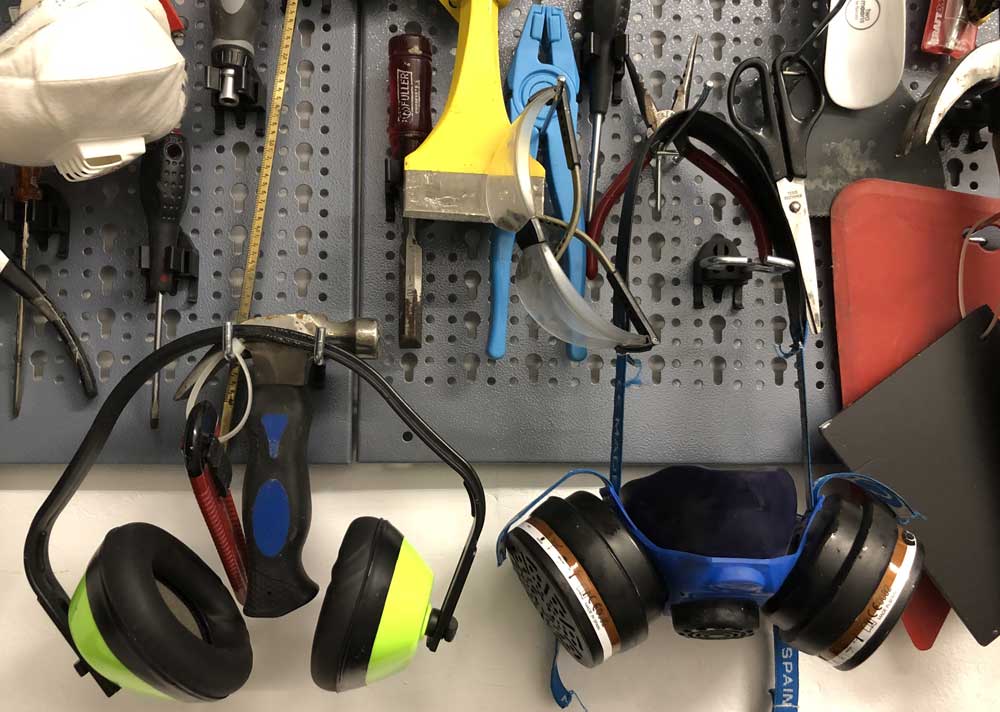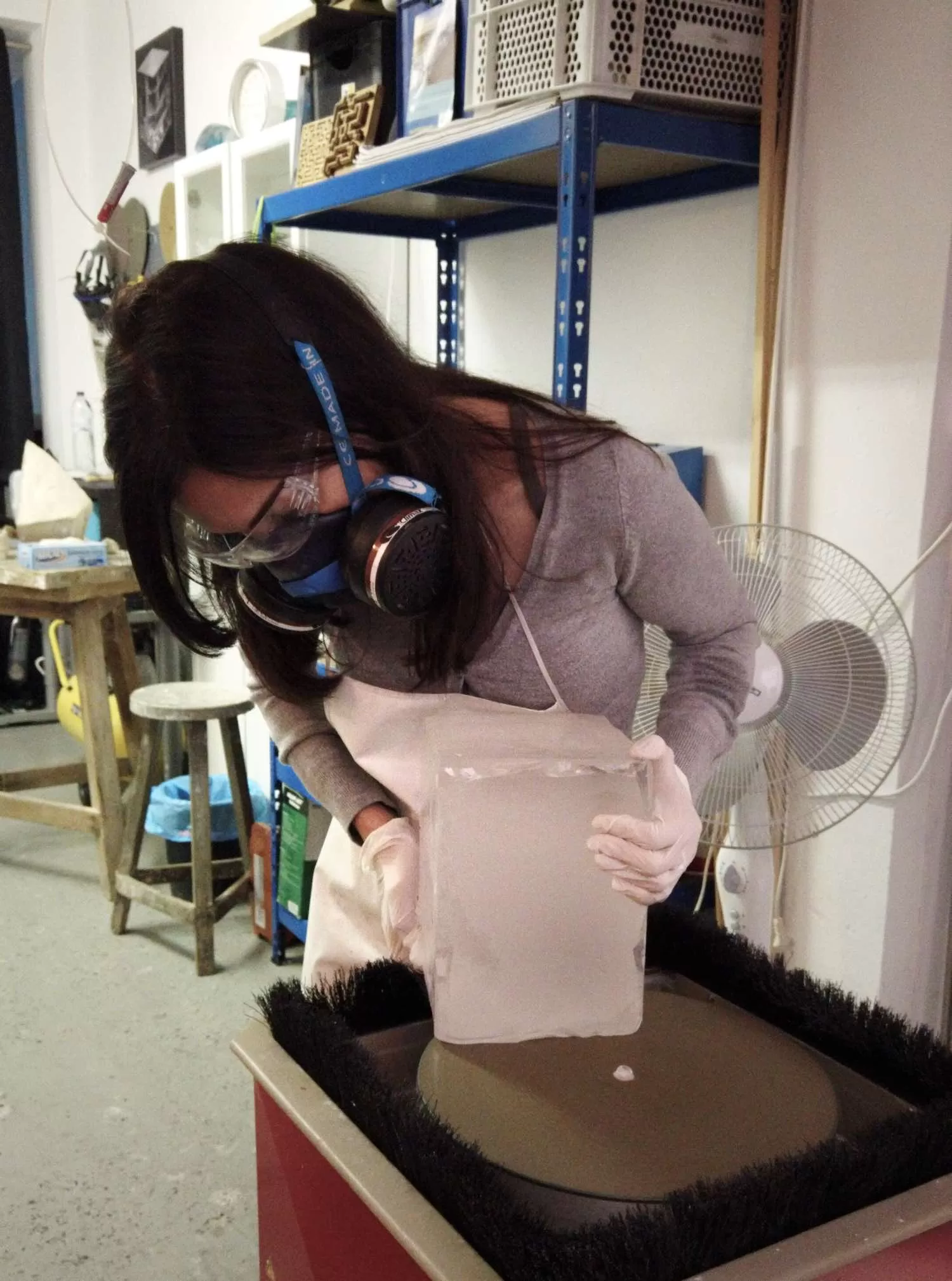
Studio safety checklist: Must-have tips for a safe glass studio
Working in a glass studio can be both rewarding and challenging, but studio safety should always be a top priority. Without proper precautions, glass artists may face health risks from harmful particles, fumes, or injuries. Follow these studio safety tips to protect yourself and your workspace.
1. Ensure proper ventilation
One of the most critical aspects of studio safety is maintaining adequate ventilation. Harmful particles and fumes—especially from running a kiln—can pose severe health risks. To ensure your studio is properly ventilated:
- Install a fan or a complete ventilation system that pulls contaminated air out through an open window or door.
- Regularly renew the air to maintain a safe environment.
- If your kiln lacks venting, stay out of the studio while it’s running to avoid exposure to hazardous fumes.
2. Wear an FFP3 mask for respiratory protection
Dust and fine particles are common in a glass workshop, particularly during tasks like grinding glass, sandblasting, or working with silica for mold making. Long-term exposure can lead to severe lung damage.
- Always wear a certified FFP3 respirator to filter out dangerous powders and airborne particles.
- You can opt for disposable FFP3 masks or reusable respirators with replaceable filters.
- Regularly inspect and replace filters to maintain optimal protection.
3. Prioritize electrical safety
Electricity and water don’t mix, but many glass studio machines use water for cooling and cutting. Follow these studio safety practices to reduce electrical hazards:
- Regularly inspect cables and connections for wear and damage.
- Keep floors dry and clear of water to prevent slips and electrical accidents.
- Use surge protection sockets and ensure your electrical installation has a grounding system for added safety.
4. Use eye protection at all times
Protecting your vision is crucial in a glass studio. When cutting glass or using saws, eye protection is non-negotiable.
- Invest in high-quality, anti-fog goggles that shield your eyes from flying shards.
- Check for comfort and durability to ensure they don’t interfere with your work.
- Make eye protection a habit, regardless of the task at hand.
5. Safeguard your hands with protective gloves
Your hands are invaluable as an artist, so always use gloves when handling or cutting glass.
- Choose gloves specifically designed for glass work or durable rubber gloves.
- Keep a first-aid kit readily available in case of accidental cuts.
- Regularly inspect gloves for wear and replace them as needed.
6. Protect your hearing with ear protection
Studio machinery, particularly cutting saws, can reach noise levels that damage your hearing over time.
- Use ear protection like earmuffs or earplugs to minimize noise exposure.
- Choose comfortable, noise-canceling options for long work sessions.
7. Maintain a clean and safe studio environment
Good hygiene is an essential aspect of studio safety. Dust, debris, and tiny glass shards can accumulate on surfaces and floors, posing respiratory and injury risks.
- Vacuum the studio floor regularly to remove fine particles.
- Mop after vacuuming to catch any remaining dust.
- Keep your workspace organized and clutter-free to reduce hazards.

